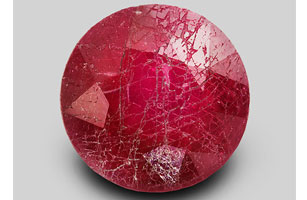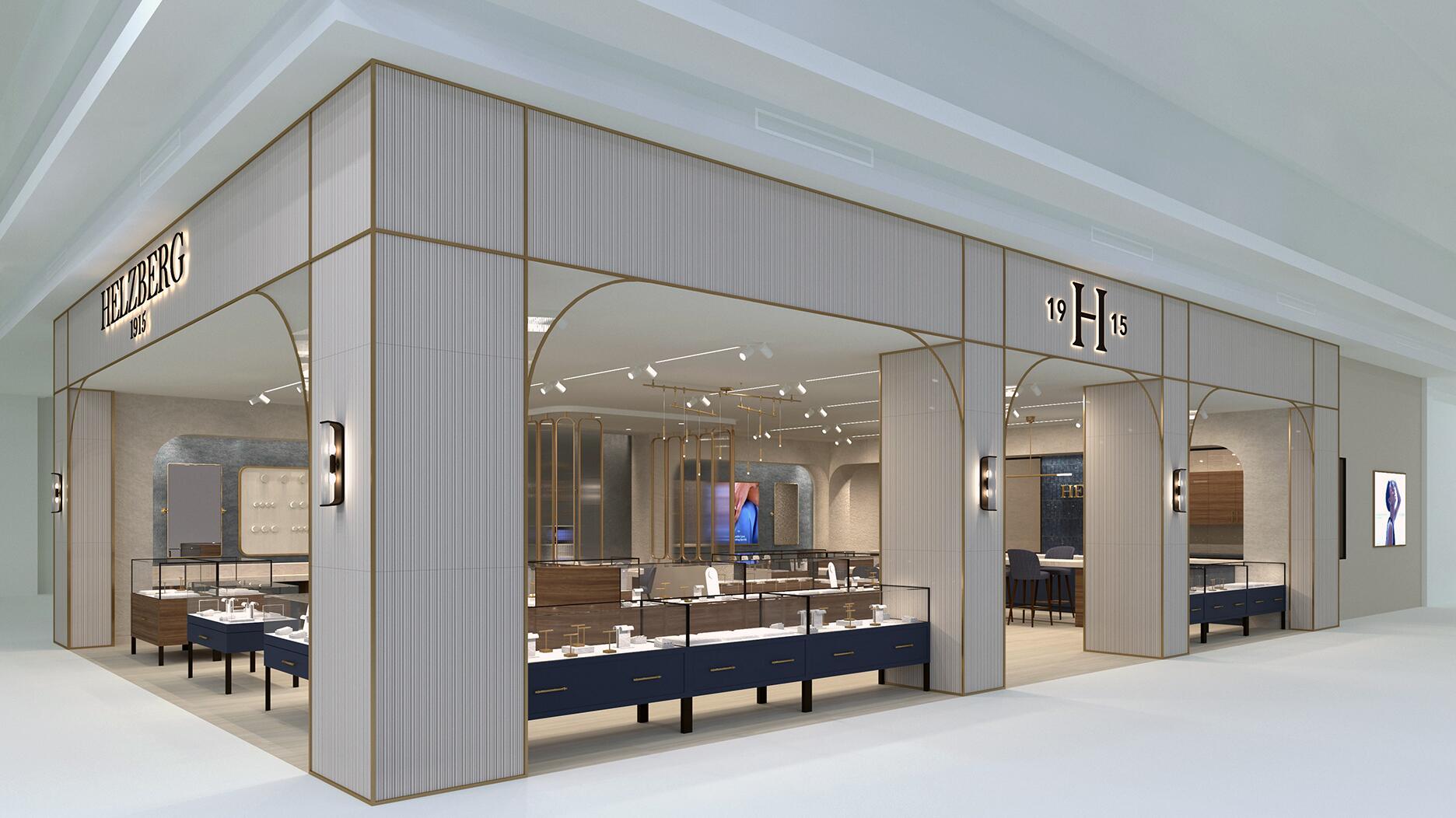The couple pleaded guilty to concealing at least $127 million in cash transactions at its precious metals businesses.
A primer on lead glass-filled rubies
With all the recent consumer press reports accusing major chains of selling lead glass-filled rubies without proper disclosure, Associate Editor Brecken Branstrator takes a look at the rules for selling these stones.
While the prevalence of lead glass-filled rubies in the market and the issue of non-disclosure to consumers is far from new to the industry, it has been given new life in the consumer press in recent months.

The creation of these stones involves taking very low-quality, industrial-grade ruby and infusing it with glass that has a high lead content. Some stones are more ruby than glass while other are more glass than ruby.
In either case, the amount of glass in these stones is significant and they must be handled carefully because the glass can be damaged by a variety of standard practices. These stones are very unstable under normal conditions of wear and tear and can be damaged even by common household cleaners.
Though selling these types of rubies is legal, the Federal Trade Commission’s guides for jewelry requires disclosure at the point of sale when it comes to the treatment and care needed. According to its Guides for the Jewelry, Precious Metals, and Pewter Industries, “it is unfair or deceptive to use the unqualified [word] ‘ruby’… to describe any product that is not in fact a natural stone of the type described.”

This photo provided by American Gemological Laboratories shows a composite ruby that has been damaged during jewelry repair, which happens due to the high content of lead-glass in these stones.
The lack of disclosing results in not only a loss of consumer confidence in regard to rubies but for all jewelry in general, as well as opens up the retailer to the possibility of legal action. This is why it’s more important than ever for retailers to be aware of what’s expected of them.“If it has lead glass in it, it has to be disclosed that it’s treated and requires special care,” Jewelers Vigilance Committee’s Cecilia Gardner told me.
She added that when it comes to the term “natural,” she has had many gemologists tell her that after examining these kinds of rubies, they have found that there is so little natural material that labeling it as such would be inappropriate.
The JVC, along with a number of other trade organizations, submitted a brief to the FTC suggesting a number of revisions to its Guides so that there can be a standard throughout the industry.
They have taken the stand that the following vocabulary be used:
--That “natural” be used to refer to untreated rubies;
--That “treated” be used to identify a ruby that has been treated in a traditional methods, such as heating to modify color or healing open fissures by adding chemicals, and to which no significant weight is added;
--And that “imitation,” “manufactured,” “composite,” or “simulated” be used to describe the rubies that are low-grade, non-gem corundum and are infused or combined with lead glass to produce a stone that appears to be of higher quality, to which significant weight has been added.
When it comes down to it, the best way to avoid any issues is to be vigilant. Press suppliers for full disclosure, and provide the same for your customers to ensure their continued trust about the business in the future and to avoid legal action, from them or the government.
The Latest

Consumers shared concerns about prices, inflation, tariffs, trade, and politics in the survey’s write-in response section.

In February 2026, the auction house will move its headquarters to the former Steinway Hall, a neoclassical landmark on Billionaires’ Row.

How Jewelers of America’s 20 Under 40 are leading to ensure a brighter future for the jewelry industry.

The new show will take place Jan. 23-25, 2026.


The former BHP Billiton leader and Gemfields chairman is remembered for his influential leadership throughout his 50-year mining career.

The LVMH-owned brand has partnered with the costume design union to revamp its award for 2026.

Roseco’s 704-page catalog showcases new lab-grown diamonds, findings, tools & more—available in print or interactive digital editions.

The luxury titan inked a deal to acquire an initial minority stake in the jewelry manufacturer with a pathway to full ownership by 2032.

The company’s curation of unsigned vintage and estate jewelry debuted at the Bloomingdale’s in Costa Mesa, California.

In the recent multi-shipment seizure, CBP also found counterfeit Audemars Piguet, Moncler, and Chrome Hearts items.

Jewelers of America execs and National Jeweler editors discuss tariffs, the sky-high gold price, and the engagement that broke the internet.

The luxury goods company said founder Ippolita Rostagno will remain at the brand’s helm.

Laura Burdese, who joined the Italian luxury brand in 2022, will take on the role in July.

Need a gift for the cat lover who has everything? Look no further than our latest Piece of the Week.

It purchased the “Grosse Pièce,” an ultra-complicated Audemars Piguet pocket watch from the ‘20s, for a record-breaking price at Sotheby’s.

The lab-grown diamond grower now offers custom engagement and fashion jewelry through its Kira Custom Lab Jewelry service.

Chandler got his start at Michelson Jewelers and has served as DCA president and CEO since 2001. He will retire at the end of the month.

The boutique is slated to open this week inside Terminal 8, offering pre-owned Rolex watches and more to international travelers.

Sponsored by Digital Monitoring Products

The special-edition egg pendant ingested in a New Zealand jewelry store was recovered after a six-day wait.

Associate Editor Natalie Francisco plays favorites with Piece of the Week, selecting a standout piece of jewelry from each month of 2025.

The “Love and Desire” campaign is inspired by the magic that follows when one’s heart leads the way, said the brand.

Two awardees will receive free tuition for an educational course at the Swiss lab, with flights and lodging included.

Berta de Pablos-Barbier will replace Alexander Lacik at the start of January, two months earlier than expected.

Sotheby’s held its first two jewelry sales at the Breuer building last week, and they totaled nearly $44 million.

Winners will receive free registration and lodging for its fourth annual event in Detroit.



























